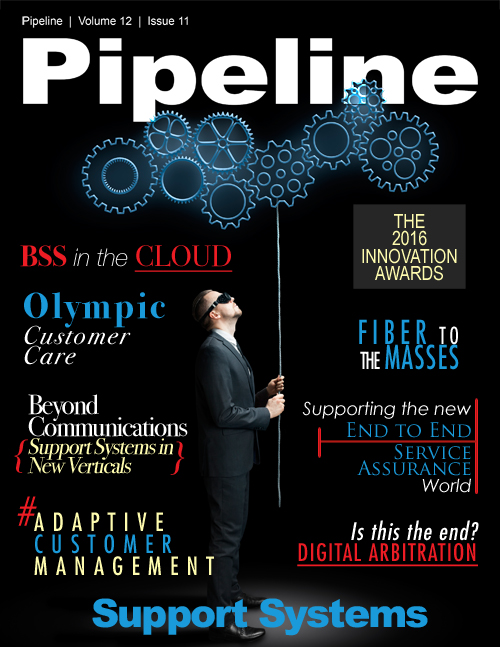Adaptive Customer Management Creates Exceptional Customer Experience Through Big Data Analytics
By: Havish Timmaraju

As a society, we collect an awful lot of data: about people, about processes, about things. The volume, variety and velocity of Big Data is growing exponentially, and over the next 10 years, global traffic is predicted to reach over 100 trillion gigabytes. Research firm IDC argues that the world's information now doubles about every year and a half. It’s the intelligence of our systems that’s precipitating this rapid growth—the volume of structured and unstructured data being collected isn’t necessarily valuable on its own; but what companies can now do with this data is becoming incredibly important.
Data collected specifically about customers—their likes, dislikes, purchasing patterns, abandonments, frequency of purchases and other variables—is being analyzed to not only better understand customers and the products they’re interested in and using, but also to predict how they want to use them in the future. The analysis of this data is also helping companies make better strategic business decisions to create better customer experiences and, as a result, develop new revenue streams and increase revenue.
Companies such as Apple, Nike and Starbucks have perfected the creation of superior customer experiences. Each of these companies play in highly-competitive markets, but have found a way to rise above the competition by providing premium experiences, creating premium value and charging a premium price.
This same opportunity exists for competitive service providers (CSPs). Looking at the market today, there are dozens of wireline and wireless service providers, each offering similar services or bundles to their potential customer bases. This has changed significantly from just a few years ago, when it was easy to distinguish the market leaders by the sophistication of their offerings. Now that the gap has been closed, service providers need to embrace a new way of thinking about how to differentiate their services from those of their competitors and create new revenue streams. The standard bundle—the staple for service providers for the past decade—isn’t enough. For example, many standard wireless bundles include a certain amount of data or a certain number of texts or minutes. Customer that don’t come close to those limits in the standard off-the-shelf plans may feel like they are “overpaying” for services they are not using.
Apple, Nike and Starbucks have figured out how to use data that they’ve gathered about the market, their products, their processes and their customers to create these premium experiences. What they’ve done is not rocket science, but it is based on technologies that manage some aspect of the customer relationship. Customer relationship management (CRM) and customer experience management (CEM) are the familiar terms in this space; but, in the service provider space, Adaptive Customer Management (ACM) has emerged to allow service providers to gather data about customers and key processes (such as customer interactions and customer profiles). CSPs then match that data with customer behavior and context and use it to improve the customer journey by creating better customer experiences that lead to increased revenue. The objective is to proactively influence interactions with the customer so the outcomes are better both from the customer’s and company’s perspectives.
What is ACM and Why is it Different?
The key word in this type of customer management technology is “adaptive." Service providers can use existing structured or unstructured data to adapt their processes and their offers, often in real time, and make them better for their customers. However, a successful ACM program requires flexible service provider OSS/BSS systems that manage the connections between the businesses processes, the customer and the network.
These systems allow providers to precisely identify individual customers or groups of customers by an action or a set of behaviors and manage the experience, such as by providing targeted premium offers and experiences at a time when the customer is known to be interested in that specific experience. By knowing their customers better and gaining critical insights into their profile and behavior through the data they’ve gathered, as well as having a flexible BSS/OSS system in place to act on that data in real time, providers can enhance customer satisfaction, avoid churn and realize a premium price for these services. They can adapt pricing, promotions and product offerings based on individual customer journeys revealed by the customer profile data. The creation of consumer personalization and choices allows the provider to grow business, retain customers and promote loyalty.
ACM leverages dynamic data and, when combined with its BSS/OSS system, it can develop predictive/adaptive intelligence, dynamic market segment definition, pricing intelligence and an adaptive product catalog.



















